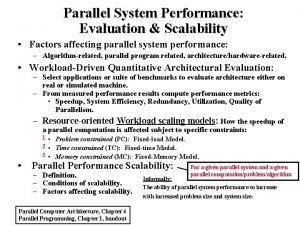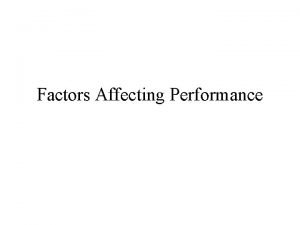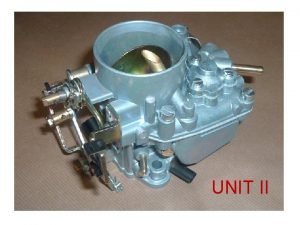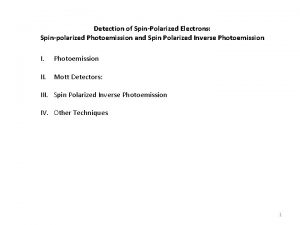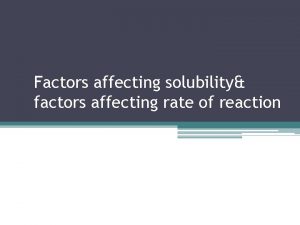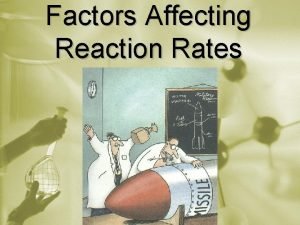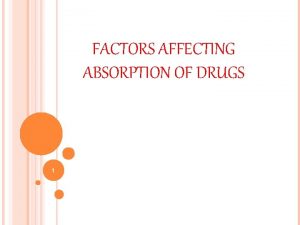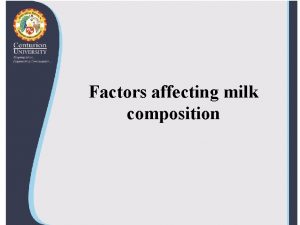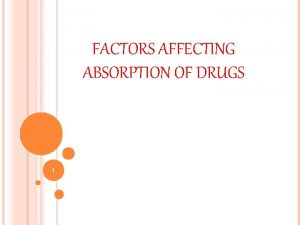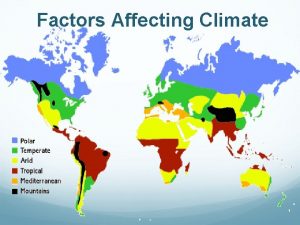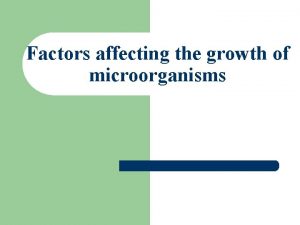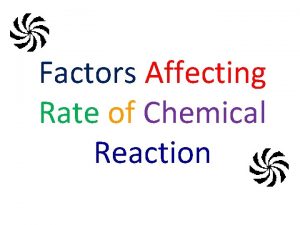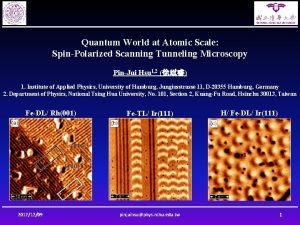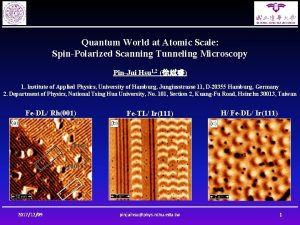Study of Factors Affecting Performance of SpinPolarized Atomic


















- Slides: 18

Study of Factors Affecting Performance of Spin-Polarized Atomic Gyroscopes Uyen Nguyen Huynh Dr. Andrei M. Shkel Max Perez Jesper Eklund Monty Rivers Ilya N. Chepurko Marc Salleras IM-SURE

Outline • • Introduction Motivation Background on Thin-film Design Background on Polarized Light Procedure Results Conclusion 2

Introduction B 1 cos(ωat) • NMRG: Nuclear Magnetic Resonance Gyroscope • Requires circularly polarized light and high optical power • Interest: optical properties at various α Static Field Bo Cross-section of assembled NMRG* Photodiode VCSEL Drawing by Jesper Eklund * John Kitching, Elizabeth Donley, Andrei M. Shkel, E. Jesper Eklund, and Eleanor Hodby, "Compact Atomic Magnetometer and Gyroscope Based on a Diverging Laser Beam, " UC Case No. 2008 -002, Patent pending. 3

NMR Cell • Coated with alternating layers of high and low indices of refraction • Filled with NMR gas 1. 8 m m Graphics and fabricated by Max Perez 4

Motivation • NMR Gyroscope performance affected by: – Circularly polarized light – Intensity of reflected light • Study the effects of multilayer reflectors and fabrication imperfection on reflectance and polarization state of light 5

Why Multi-Layer Thin-Film? Air H L Si n. H*LH = n. L*LL = λair/4 Image from http: //en. wikipedia. org/wiki/Image: Optical-coating-2. png 6

Polarization States Image from http: //www. thorlabs. com/Thorcat/12900/12973 -D 02. pdf 7

Experimental Procedure Poincare Sphere Sensor Sample ¼ Wave-Plate ½ Wave-Plate VCSEL λ = 795 nm Full Cell ½ Cell 8

Power Split Ratio • Power Split Ratio: 0 ≤ a ≤ 1 • Phase difference: -180 o ≤ ∆ ≤ 180 o Circularly Polarized light: • a = 0. 5 • ∆ = ± 90 o Image from http: //www. thorlabs. com/Thorcat/12900/12973 -D 02. pdf 9

Test Samples • • • Bulk Silicon cell 12 Si 3 N 4 -Si. O 2 layer cell (n = 2. 0, 1. 5) 8 Si-Si. O 2 layer cell (n = 3. 7, 1. 5) 6 Si-Si. O 2 layer cell 6 Si-Si. O 2 layer wafer Graphics and fabricated by Max Perez 10

Results of 6 -Layer Cell ½ NMR Cell Sensor VCSEL 11

Results of 6 -Layer Wafer 6 Layer Wafer Sensor VCSEL 12

Analysis Results of the 6 -Layer Cell Sensor ½ NMR Cell VCSEL E 0 x 13

Intensity of First Reflection VCSEL 14

Results of Double Reflection Graph and samples by Max Perez 15

Conclusion • Multi-layer thin-film design: – Improves cell’s reflectance to ~ 99% – Able to keep circularly polarized light inside cell • Fabrication imperfection: – Decreases reflectance of NMR cell – Varies phase difference significantly – Changes the polarization state of light inside cell – Improves reflectance compared to bulk Si cell 16

Acknowledgements NATIONAL SCIENCE FOUNDATION IM-SURE Managing Director : Said M. Shokair Faculty Mentor: Andrei M. Shkel, Ph. D. Micro. Systems Lab Max Perez Jesper Eklund Monty Rivers Ilya N. Chepurko Marc Salleras 17

Questions?
 Factors affecting sports performance
Factors affecting sports performance Physiological factors affecting performance
Physiological factors affecting performance Externally paced skill
Externally paced skill Factors affecting performance of parallel algorithm
Factors affecting performance of parallel algorithm Factors affecting performance
Factors affecting performance Hollander personality theory
Hollander personality theory Relative atomic mass of beryllium
Relative atomic mass of beryllium Periodic trends
Periodic trends Atomic radius trend
Atomic radius trend How to calculate abundance of isotopes
How to calculate abundance of isotopes Whats the difference between atomic mass and atomic number
Whats the difference between atomic mass and atomic number Atomic number vs atomic radius
Atomic number vs atomic radius What factors shape the climate in canada
What factors shape the climate in canada Factors affecting microbial growth in food
Factors affecting microbial growth in food Factors affecting volcanic eruption
Factors affecting volcanic eruption Factors affecting volcanic eruption
Factors affecting volcanic eruption When does the simple carburetor supplies rich mixture
When does the simple carburetor supplies rich mixture Thermal gravimetric analysis principle
Thermal gravimetric analysis principle V-list link
V-list link



